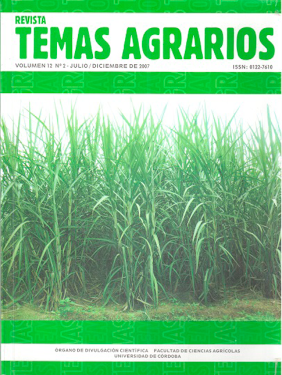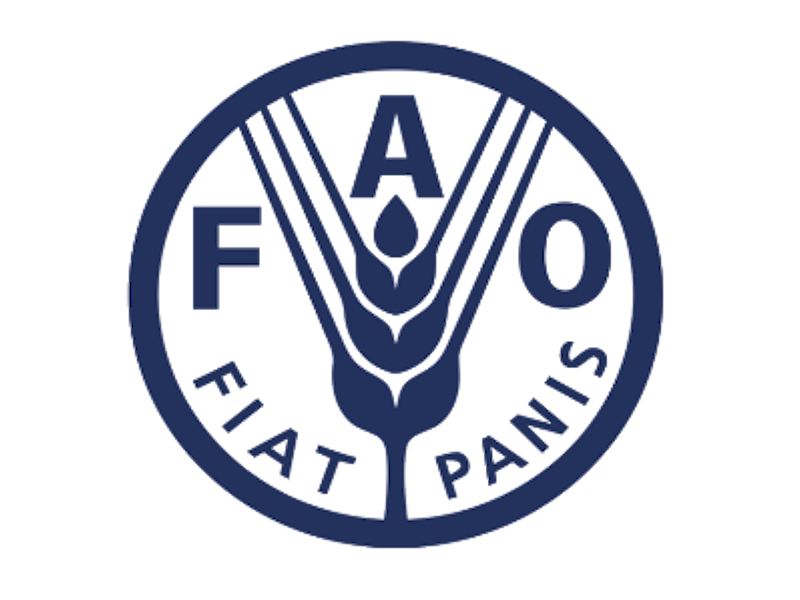Biopolímeros naturales usados en empaques biodegradables
Biopolymers naturals used in biodegradable packaging

Esta obra está bajo una licencia internacional Creative Commons Atribución-NoComercial 4.0.
Mostrar biografía de los autores
En esta revisión se hace una descripción de algunos biopolímeros aplicados a la agroindustria de empaques biodegradables, como también algunos conceptos sobre recubrimientos para productos alimenticios y otras estructuras membranosas. Estas películas dan transparencia, flexibilidad y dureza. Las películas elaboradas con biopolímeros y adición de plastificantes comerciales, aumentan sustancialmente la biodegradabilidad y mejoran las propiedades mecánicas y de barrera. Con los biopolímeros naturales renovables se abre la posibilidad de producir recubrimientos y empaques biodegradables a partir de materias primas autóctonas de Latinoamérica con destino a la protección de alimentos y otros usos agroindustriales
Visitas del artículo 22504 | Visitas PDF
Descargas
- Acosta, H.; Villada, H. y Ramírez, J. 2006. Envejecimiento de almidones termoplásticos agrios de yuca y nativos de papa por Microscopía de Fuerza Atómica. Información Tecnológica 17(3):71-78.
- Acosta, H.; Villada, H.; Torres, S y Ramírez, J. 2006. Morfología Superficial de Almidones Termoplásticos Agrio de Yuca y Nativo de Papa por Microscopía Óptica y Microscopía de Fuerza Atómica. Información Tecnológica 17(3):63-70.
- Avérous, L. y Boquillon, N. 2004. Biocomposites based on plasticized starch: thermal and mechanical behaviours. Carbohydate Polymer 56:111-112.
- Bastioli, C. 2001. Global status of the production of biobased packaging materials. Starch/Stärke. 53:351-355.
- Benavides, C. 2002. Quitina-Quitosana: Los polímeros del futuro. SENA-CDT - Regional Valle, Cali, p6-61.
- Blacido, D.; Sobral, P. y F.C. 2005. Menegalli, Development and characterization of biofilms based on Amaranth flour (Amaranthus caudatus). Journal of Food Engineering 67:215-223
- Cho, S. y Rhee, C. 2002. Sorption Characteristics of Soy Protein Films and their Relation to Mechanical Properties. Food Science and Technology 35:151-157.
- Dole, P.; Joly, C.; Espuche, E.; Alric, I. y Gontard, N. 2004. Gas transport properties of starch based films. Carbohydrate Polymer 58:335-343.
- Fernández, D.; Rodríguez, E.; Bassas, M.; Viñas, M.; Solanas, A; Llorens, J.; Marqués, A. y Manresa, A. 2005. Agro-industrial oily wastes as substrates for PHA production by the new strain (Pseudomonas aeruginos) NCIB 40045: Effect of culture conditions. Biochemical Engineering 26(2-3):159-167.
- Finkenstadt, V y Willett, J. 2004. A direct-current resistance technique for determining moisture content in native starches and starch-based plasticized materials. Carbohydrate Polymer 55:149-154.
- Fishman, M.; Coffin, D.; Onwulata, C. y Konstance, R. 2004. Extrusion of pectin and glycerol with various combinations of orange albedo and starch. Carbohydrate Polymer 57:401-413.
- Forssell, P.; Lahtinen, R.; Laheline, M. y Myllärinen, P. 2002. Oxygen permeability of amylose and amylopectin film. Carbohydrate Polymer 47:125-129.
- Gamagae, S.; Sivakumar, D. y Wijesundera, R. 2004. Evaluation of post-harvest application of sodium bicarbonateincorpo-rated wax formulation and Candida oleophila for the control of anthracnose of papaya. Crop Protection 23(7):575-579.
- García, M.; Pinotti, A.; Martino, M. y Zaritzky, N. 2004. Characterization of composite hydrocolloid films. Carbohydrate Polymer 56:339-345.
- Gulewicz, K.; Tykarska, T.; Wysocki, W.; Augustynowicz, J.; Urowska, K. y Kura, M. 2004. Developmental and ultrastructural effect of Uncaria tomentosa (Willd) DC extract on the paprika Capsicum annuum L. Industrial Crops and Products 19(1):59-67.
- Hagenmaier, R. 2005. A comparison of ethane, ethylene and CO2 peel permeance for fruit with different coatings. Postharvest Biology and Technology 37(1):56-64.
- Hanna, J. 2004. Functional properties of extruded foam composites of starch acetate and corn cob fiber. Industrial Crops and Products 19:255-269.
- Jansson, A. y Thuvander, F. 2004. Influence of thickness on the mechanical properties for starch films. Carbohydrate Polymer 56:499-503.
- Johnson, N.; Normand, V.; Clark, A. y Amici, E. 2001. Interpenetrating network formation in agarose–sodium gellan gel composites. Carbohydrate Polymer 46:383-39.
- Krochta, J.; Baldwin, E y Nisperos-Carriedo, M. 1994. Edible coatings and films to improve food quality. Technomic Publishing Company, New York, p1344.
- Kulinski, Z. y Piorkowska, E. 2005. Crystallization, structure and properties of plasticized poly (Llactide). Polymer 46(23):10290- 10300.
- Kumar, R.; Choudhary, V.; Mishra, S.; Varma, I. y Mattiason, B. 2002. Adhesives and plastics based on soy protein products. Industrial Crops and Products 16:155-172.
- Lazaridou, C.; Biliaderis, G. y Kontogiorgos, V. 2003. Molecular weight effects on solution rheology of pullulan and mechanical properties of its films. Carbohydrate Polymer 52(2):151-166.
- Lee, K.; Shim, J. y Lee, H. 2004. Mechanical properties of gellan and gelatin composite films. Carbohydrate Polymer 56:251-254.
- Marshall L. y Coffin D. 1998. Mechanical, microstructural and solubility properties of pectin/poly (vinylalcohol) blends. Carbohydrate Polymer 35:195-203.
- Matsui, K.; Larotonda, F.; Paes, S.; Luiz, D.; Pires, A. y Laurindo, J. 2004. Cassava bagasse-Kraft paper composites: analysis of influence of impregnation with starch acetate on tensile strength and water absorption properties. Carbohydate Polymer 55: 237-243.
- Muratore, G.; Del Nobile, M.; Buonocore, G; Lanza, C. y Asmundo, C. 2005. The influence of using biodegradable packaging films on the quality decay kinetic of plum tomato (Pomodorino Datterino). Journal of Food Engineering 67(4):393-399.
- Parra, D.; Tadini, C.; Ponce, P. y Lugao, A. 2004. Mechanical properties and water vapor transmission in some blends of cassava starch edible films. Carbohydate Polymer 58:475-481.
- Pedroso, A. y Rosa, D. 2005. Mechanical, thermal and morphological characterization of recycled LDPE/ corn starch blends. Carbohydrate Polymer 59:1-9.
- Peesan, M.; Supaphol, P. y Rujiravanit, R. 2005. Preparation and characterization of hexanoyl chitosan/polylactide blend films. Carbohydate Polymer 63(1): 1-8.
- Pesis, E. 2005. The role of the anaerobic metabolites, acetaldehyde and ethanol, in fruit ripening, enhancement of fruit quality and fruit deterioration: Review. Postharvest Bioogy and Technology 37(1):1-19.
- Petnamsin, C.; Termvejsayanon, N. y Sriroth, K. 2000. Effect of particle size on physical properties and biodegradability of cassava starch/ polymer blend. Journal of Natural Sciences 34:254-261.
- Ryu, S.; Rhim, J.; Roh, H. y Kim, S. 2002. Preparation and physical properties of zein-coated high-amylose corn starch film. Food Science and Technology 35:680-686.
- Shamekin, S.; Myllärihen, P.; Poutanen, K. y Forssell, P. 2002. Film formation properties of potato starch hydrolysates. Starch/Stärke 54:20-24.
- Smits, A.; Kruiskamp, P.; Van Soes, J. y Vliegenthart, J. 2003. The influence of various small plasticisers and malto-oligosaccharides on the retrogradation of (partly) gelatinised starch. Carbohydrate Polymer 51:417-424.
- Srinivasa, P.; Ramesh, M.; Kumar, K. y Tharanathan, R. 2004. Properties of chitosan films prepared under different drying conditions. Journal of Food Engineering 63:79-85.
- Tangpasuthadol, V.; Pongchaisirikul, N. y Hoven, V. 2003. Surface modification of chitosan films. Effects of hydrophobicity on protein. Carbohydrate Research 338:937-942
- Tharanathan, R. 2002. Food derived carbohydrates-structural complexity and functional diversity. Critical Review Biotechnology 22:65-84
- Tharanathan, R. 2003. Biodegradable films and composite coatings: past, present and future. Critical Review in Food Science and Technology 14:71-78.
- Villada, H. 2005. Influencia de mezclas de almidón agrio, perfil de temperatura y velocidad de tornillo de un extrusor sencillo en la producción de almidón termoplástico, su caracterización físico-química, mecánica, microestructural y comportamiento durante el almacenamiento. Tesis Ph. D., Universidad del Valle, Cali.
- Wang, Y.; Rakotonirainy, M. y Papua, W. 2003. Thermal behavior of Zeínabase biodegradable films. Starch/ Stärke 55:25-29.
- Wittmaack, K.; Wehnes, H.; Heinzmann, U. y Agerer, R. 2005. An overview on bioaerosols by scanning electron microscopy. Science of the Total Environment 346:244-255.
- Xu, Y.; Kim, K.; Hanna, M. y Nag, D. 2005. Chitosan–starch composite film: preparation and characterization. Industrial Crops and Products 21(2):185-192.
- Yu, X. 2004. The plastcizers containing amide groups for thermoplastic starch. Carbohydrate Polymer 57:197-203




















